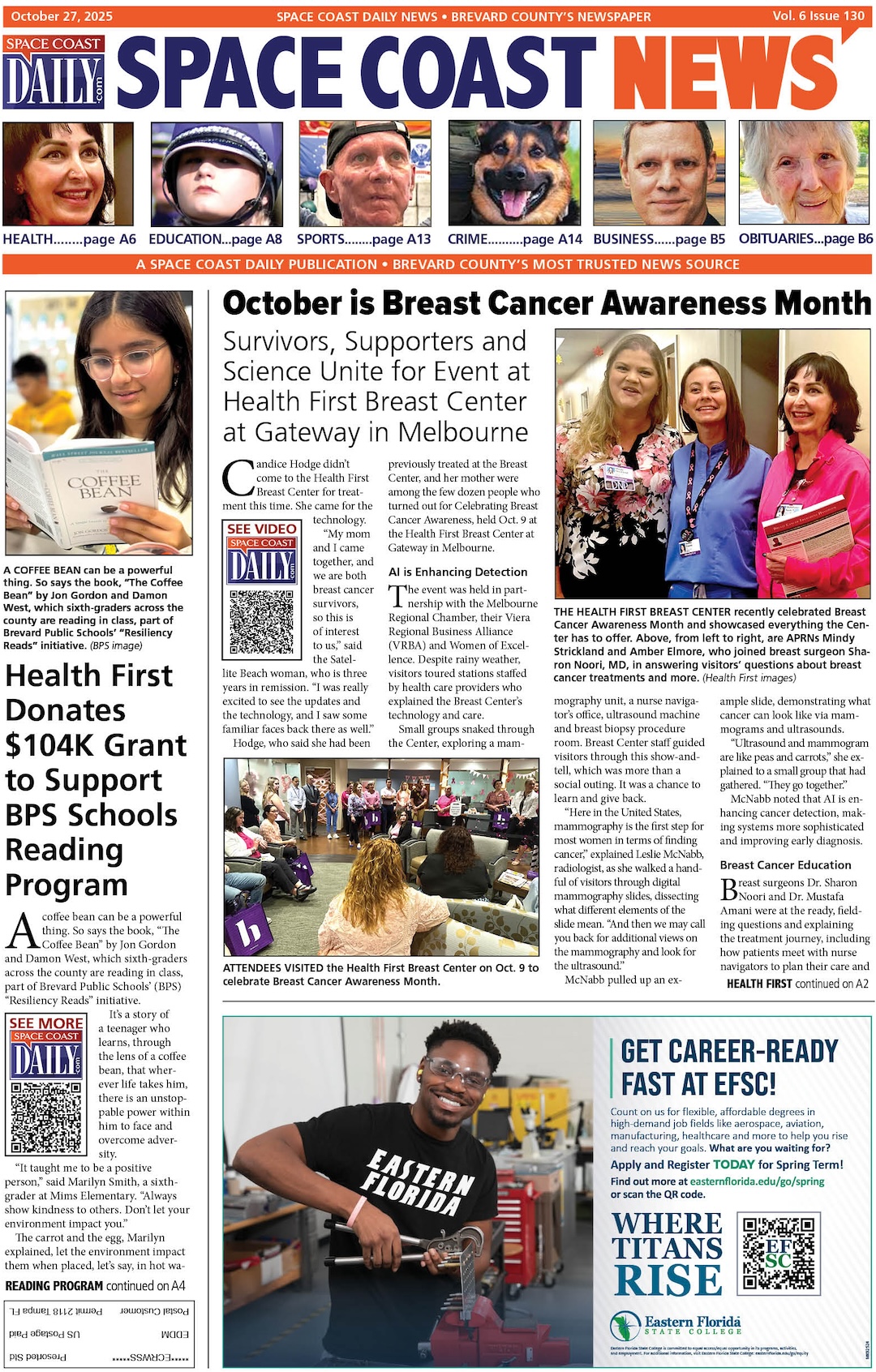Respiratory Syncytial Virus: What Every Parent Needs to Hear from Health First Physicians
By Space Coast Daily // November 4, 2022
SPACE COAST DAILY MEDICINE SPOTLIGHT

HEALTH FIRST’S HOLMES REGIONAL MEDICAL CENTER IS SEEING A SURGE IN RSV CASES.
BREVARD COUNTY, FLORIDA – The Pediatric Emergency Department at Health First’s Holmes Regional Medical Center is seeing a surge of RSV cases in very young patients. That should be alarming for anybody.
That doesn’t mean every pediatric case of RSV should end up here, says health system physicians.
“If you’re concerned about respiratory distress, always come to the ER,” says Dr. Larissa Dudley, an Emergency Medicine Physician.
“If it’s mild – runny nose, nasal congestion, a cough that is not causing respiratory distress – then going to a pediatrician is completely reasonable.”
According to the Centers for Disease Control and Prevention, nearly all American children have an RSV infection by the time they reach 24 months. The vast majority experience cold-like symptoms before recovering. But it is the No. 1 cause of bronchiolitis (an inflammation of the lower airways).
“That’s what we worry about with these viruses,” says Health First Pediatrician Sheila McLeod, MD. “The first couple days they have typical cold symptoms, but usually around Day 3 they get worse. That’s when they may develop these signs of difficulty breathing. That’s when they need to go to their doctor or to the ER.”
But Dr. McLeod cautions that, after being seen, much relief can be administered by parents. A primary therapy is nasal suctioning with saline.
“But they do need to be seen.”

Experts say that one of the side effects of the COVID-19 pandemic is that our youngest, born at or just before the onset of the pandemic, have been unusually shielded from exposure to common viruses like RSV. Rates for RSV are about twice as high as last year and as much as five times what it was two to three years ago.
“We didn’t see RSV so much in 2021 and certainly in 2020,” says Dr. Dudley, “and that’s because of people’s behavior. We were wearing masks and practicing good hand hygiene or not going out in public. So parents with children aged 2 years old or younger, this may seem new and out of the blue when in fact we just have a different perspective because of the COVID-19 pandemic.”
Respiratory syncytial virus sends about 58,000 children under 5 years old to the hospital each year, typically for IV hydration and supplemental oxygen, as well as treatments.

WHAT TO DO?
RSV is passed both by physical contact and by respiratory droplets. Washing and sanitizing hands, your baby’s and your own, is effective at cutting transmission, as is donning masks when interacting with others.
The American Academy of Pediatrics is a terrific internet resource for parents, says Dr. McLeod. This page – RSV: When It’s More Than Just a Cold – considers when a baby or child is battling a cold, and when it’s something more serious, like bronchiolitis brought on by RSV.
The most important thing is to make sure the patient is staying hydrated and isn’t clearly struggling to breathe.
DOCTOR’S OFFICE OR EMERGENCY?
The most severe cases of RSV in small children and infants arrive at area hospitals such as Health First’s Holmes Regional Medical Center and its Pediatric Emergency Department.
But not every mild or moderate case should end up there. Why? Because hospitals are places where other sicknesses are present and being treated. In most cases, a call to your pediatrician or primary care provider is the fastest track toward recuperation.
However, Drs. Dudley and McLeod listed these conditions as causes to drop what you’re doing and visit the nearest hospital Emergency Department immediately:
■ Making fast and irregular breaths, grunting to breathe, flaring their nostrils
■ The skin between the ribs, below the collar bone and above the sternum is “sucked in” with each breath
■ Bluish-purple color around the lips
■ Limp and lethargic bodies
■ Eating and drinking less such that they produce less than half the normal amount of wet diapers.
And above all, trust your gut, Dr. McLeod tells parents.
“Parenting is instinctual. If you’re worried, get your baby checked out.”
To make an appointment with a Health First doctor, including Virtual Visits and Urgent Care, visit HF.org/schedule.













